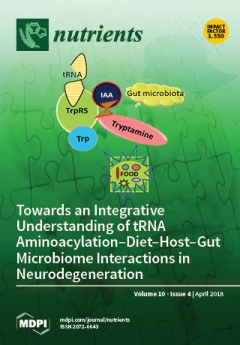1
Instituto Pensi, Fundação Jose Luiz Egydio Setubal, Sabará Hospital Infantil, São Paulo 01239-040, Brazil
2
Departamento de Pediatria, Escola Paulista de Medicina, Universidade Federal de São Paulo, São Paulo 04023-062, Brazil
3
Committee of Nutrition and Wellbeing, International Life Science Institute (ILSI-Argentina), Buenos Aires C1059ABF, Argentina
4
Departamento de Bioquímica, Escuela de Medicina, Universidad de Costa Rica, San José 11501, Costa Rica
5
Centro de Nutrición Molecular y Enfermedades Crónicas, Departamento de Nutrición, Diabetes y Metabolismo, Escuela de Medicina, Pontificia Universidad Católica, Santiago 833-0024, Chile
6
Departamento de Nutrición y Bioquímica, Pontificia Universidad Javeriana, Bogotá 110111, Colombia
7
Colegio de Ciencias de la Salud, Universidad San Francisco de Quito, Quito 17-1200-841, Ecuador
8
Instituto de Investigación Nutricional, La Molina, Lima 15026, Peru
9
Centro de Estudios del Desarrollo, Universidad Central de Venezuela (CENDES-UCV)/Fundación Bengoa, Caracas 1010, Venezuela
10
Departamento de Psicobiologia, Universidade Federal de São Paulo, São Paulo 04023-062, Brazil
11
University of Munich Medical Center, Division of Metabolic and Nutritional Medicine, Dr. von Hauner Children’s Hospital, Ludwig-Maximilians-Universität München, D-80337 Munich, Germany
12
Department of Family Medicine and Public Health, University of California, San Diego, CA 92093, USA
13
Facultad de Ciencias de la Salud, Growth, Exercise, Nutrition and Development (GENUD) Research Group, Universidad de Zaragoza, Zaragoza 50009, Spain
14
Departamento de Nutrição, Faculdade de Saúde Pública, Universidade de São Paulo, São Paulo 03178-200, Brazil
15
Faculdade de Ciências Biológicas e da Saúde, Universidade São Judas Tadeu, São Paulo 03166-000, Brazil
†
Membership of the ELANS Study Group is provided in the Acknowledgments.
add
Show full affiliation list
remove
Hide full affiliation list
Abstract
Non-communicable diseases are growing at an alarming rate in Latin America. We assessed total and added sugar intake in Argentina, Brazil, Chile, Colombia, Costa Rica, Ecuador, Peru, and Venezuela, to verify the adequacy of the World Health Organization’s recommendations, considering gender, socioeconomic level
[...] Read more.
Non-communicable diseases are growing at an alarming rate in Latin America. We assessed total and added sugar intake in Argentina, Brazil, Chile, Colombia, Costa Rica, Ecuador, Peru, and Venezuela, to verify the adequacy of the World Health Organization’s recommendations, considering gender, socioeconomic level (SEL) and age. A total of 9218 non-institutionalized individuals living in urban areas (age range 15–65 years) were assessed in the Latin American Study of Nutrition and Health (ELANS), a multicenter household population-based cross-sectional survey. Socio-demographic data were collected. Total and added sugar intakes were measured using two non-consecutive 24-h dietary recalls. The prevalence of excessive sugar intake was estimated. A large proportion of individuals showed high consumption of total and added sugar intake, which reflected in the high prevalence of excessive sugar intake. With minimal differences across countries, in general, women, individuals with high SEL, and younger people had higher percentages of total energy intake from total and added sugar intake, and of contribution of carbohydrates from total and added sugars. Thus, there is high consumption of total and added sugar intake in the Latin American countries with some peculiarities considering socio-demographic variables, which should be considered in each country’s health intervention proposals.
Full article






